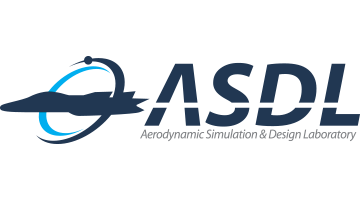Supersonic Inlet Flow Control and Flow Instability
The ramjet engine is a type of supersonic air-breathing engine that operates in the range of Mach number from 2 to 5. In this type of engine, supersonic inflow is compressed and decelerated to subsonic speed for combustion. Since this engine can compress the air without a compressor, it is getting the spotlight for its lightness and efficiency. Despite its advantages such as lightness and efficiency, ramjet inlets have complex flow characteristics due to shock wave/shock wave and shock wave/boundary layer interactions, causing flow instability accompanied by shock wave oscillation, referred to as inlet buzz. Inlet buzz causes serious problem such as thrust loss, combustion failure, and even structural damage. There are many research topics for physical understanding of flow around a supersonic inlet and improving inlet performance.

I. Flow control using bleed
In order to prevent flow instabilities and to improve performance of a supersonic inlet, a flow control device known as bleed is used. Figure 2 shows a typical porous bleed device. A bleed can control flow by removing low momentum flow in a boundary layer through bleed holes. Though bleeds are attractive for an efficient control of supersonic and hypersonic inlet flows, it is rather difficult to alter parameters such as bleed location and width, once they are installed. Thus, finding an optimal condition of bleed system through design optimization is essential before bleed installation. In this topic, we conducted a study on finding optimal bleed conditions improving the inlet performance and stability in the sub-critical operating range where ram acceleration starts.


Figure 3 shows total pressure recovery in terms of inlet mass flow rate. As shown in this figure, the total pressure recovery is increased by the bleeds and the total mass flow rate supplied into the inlet air chamber is also increased, in spite of the mass flow loss by the bleeds. The inlet mass flow loss by the bleeds is clearly compensated by the mass flow gain to yield the positive net mass flow rate. The curve indicates that the inlet with bleeds has higher total pressure recovery and inlet mass flow rate than the baseline case. The curve also shows that the bleeds can effectively suppress inlet buzz for TR< 2.41, where inlet buzz occurs without bleeding. As shown in Fig. 4, the bleeds prevent the terminal shock wave from moving in the upstream direction and remove the separated flow region, while inlet buzz occurs without the bleeds. The mass flow removed by the bleeds causes pressure drop after the shock, thus the lowered back pressure cannot push the shock wave upstream. Consequently, the bleed device provides enhanced inlet performance in the sub-critical operating range by increasing the total pressure recovery, and extends the inlet operation range by effectively suppressing inlet buzz.

II. Analyses of supersonic inlet instability
To understand hysteretic inlet buzz characteristics, unsteady computations are conducted under a complete historic path of inlet mass flow change. As the inlet mass flow rate decreases, a sudden transition of inlet buzz frequency from mode 1 to mode 2 is observed. At the beginning of increasing mass flow rate from the closed exit, another buzz transition from the mode 2 to mode 3 is observed. Even though the mass flow rate increases continuously, the high frequency in mode 3 is consistently maintained until the throttling ratio reaches a high mass flow rate condition. If the mass flow rate increases further, the dominant frequency drops from mode 3 to mode 1. As a result, the buzz frequency and total pressure recovery under the increasing mass flow rate condition is quite different from the one under the decreasing mass flow rate condition. In other words, the computational study shows the hysteretic buzz behavior dependent on the mass flow rate change with three kinds of buzz transitions.







